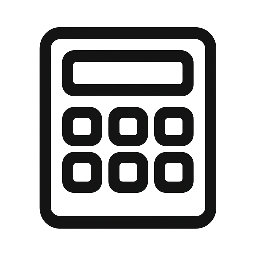Test Grade Calculator
Percentage grade: 100%
Letter grade: A
Fraction grade: 10/10
How the Test Grade Calculator Works
A Test Grade Calculator is a simple tool that helps students, teachers, and even parents quickly find out the score of a test, quiz, or exam. Instead of doing the math manually every time, the calculator instantly tells you:
- How many questions you got correct
- The percentage score (out of 100)
- The letter grade (A, B, C, D, or F depending on scale)
- Fraction score (like 18/20)
- Grade tables for quick reference (how many right/wrong equals which grade).
Let’s explore how it works step by step.
1. The Inputs
The calculator asks you for two main pieces of information:
- Total number of questions (or points)
- This is how many questions the test had in total.
- Example: If your exam had 50 multiple-choice questions, then “Total questions” = 50.
- Number of wrong answers
- This is how many questions you got incorrect.
- Example: If you got 5 questions wrong in the exam, then “Wrong answers” = 5.
That’s it! These two numbers are enough to calculate everything else.
2. The Calculations
Once you give these two numbers, the calculator does four important calculations.
(a) Correct answers
Formula:
Correct answers = Total questions – Wrong answers
- Example: If you answered 50 questions in total and 5 were wrong, then:
Correct = 50 – 5 = 45
(b) Percentage score
Formula:
Percentage = (Correct answers ÷ Total questions) × 100
- Example: Correct = 45, Total = 50
Percentage = (45 ÷ 50) × 100 = 90%
So, the calculator shows you that you scored 90%.
(c) Fraction score
This is simply shown as:
Correct / Total
- Example: 45 out of 50 is written as 45/50.
This fraction format is very useful when teachers are grading or when students want to quickly see how many points they got.
(d) Letter grade
This part depends on a grading scale. Different schools use different systems. The calculator gives you two options:
- Standard grading scale (A, B, C, D, F)
- A = 90–100%
- B = 80–89%
- C = 70–79%
- D = 60–69%
- F = below 60%
- Example: With 90% score, your grade = A
- Plus/Minus grading scale (A+, A, A-, B+, B, B-, etc.)
- This is a little more detailed.
- Example ranges:
- A+ = 97–100%
- A = 93–96%
- A- = 90–92%
- B+ = 87–89%
- B = 83–86%
- …and so on.
- Example: With 90%, your grade = A-
3. The Grade Table
One more helpful feature is the grade table.
- The calculator automatically shows a table with all possibilities:
- If you got 0 wrong, what is the grade?
- If you got 1 wrong, what is the grade?
- If you got 2 wrong, what is the grade?
- …up to all possible wrong answers.
This helps students to see in advance:
- “If I miss 3 questions, what will my grade be?”
- “How many mistakes can I afford to still get an A?”
For teachers, this is useful for quickly setting up answer keys.
4. Reset Option
There’s a Reset button that clears everything back to default values (for example, 10 questions total and 0 wrong). This is useful when you want to calculate grades for multiple students one after another.
Example Walkthrough
Let’s imagine you are a student who just took a math quiz.
- Total number of questions = 20
- Number of wrong answers = 4
Now let’s use the calculator:
Step 1: Correct answers
Correct = 20 – 4 = 16
Step 2: Percentage
Percentage = (16 ÷ 20) × 100 = 80%
Step 3: Fraction
Fraction = 16/20
Step 4: Letter grade
- If you select Standard Scale:
80% = B - If you select Plus/Minus Scale:
80% = B-
So, your final result looks like this:
- Correct answers: 16
- Percentage grade: 80%
- Letter grade: B (standard) OR B- (plus/minus)
- Fraction grade: 16/20
Why is This Useful?
- Quick Results – Instead of manually calculating, you instantly get your grade.
- Accuracy – No chance of silly mistakes in dividing or multiplying.
- Learning Tool – Helps students understand grading scales better.
- Planning Ahead – You can test “what-if” situations.
- Example: “If my exam has 50 questions, how many can I miss to still get an A?”
